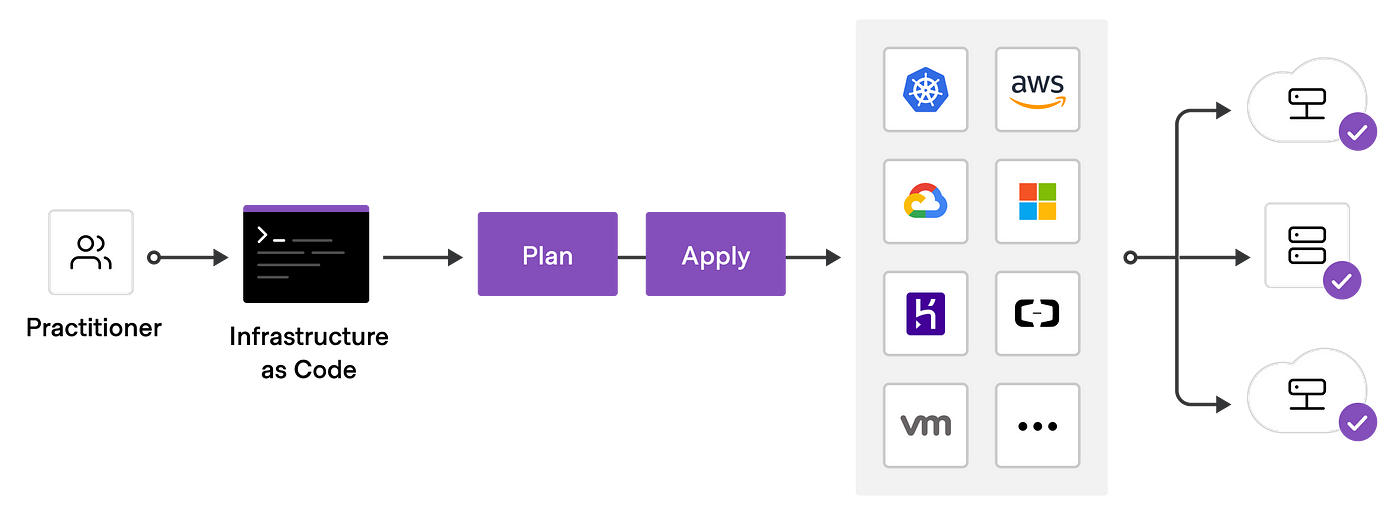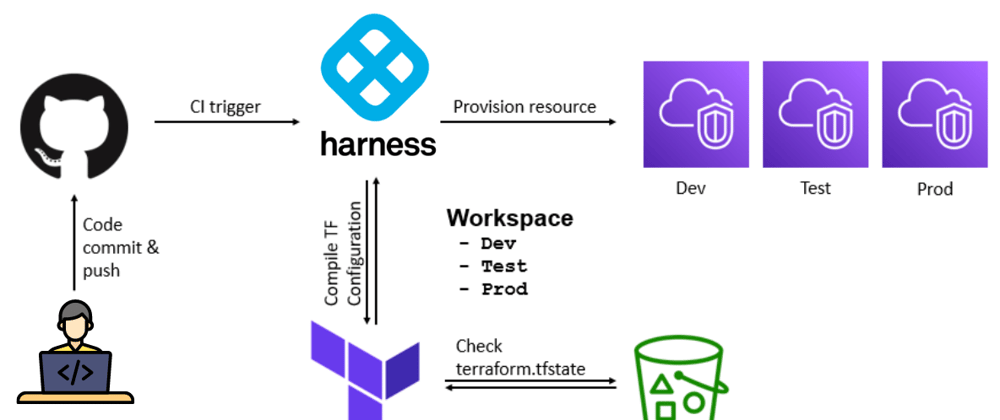Introduction to Terraform
 Hamza Rehman
Hamza RehmanIn today's digital world, where technology evolves at an incredible pace, managing infrastructure efficiently is crucial. Traditionally, managing infrastructure involved manual tasks, which were time-consuming and error-prone. However, with the advent of Infrastructure as Code (IaC) tools like Terraform, managing infrastructure has become more streamlined, reliable, and scalable. This article will introduce Terraform, a popular IaC tool, explain what IaC is, and highlight the benefits of using Terraform with real-world scenarios.
What is Infrastructure as Code (IaC)?
Infrastructure as Code (IaC) is a practice that involves managing and provisioning computing infrastructure through machine-readable configuration files, rather than through physical hardware configuration or interactive configuration tools. IaC enables automation of the infrastructure setup process, ensuring consistency and reducing the risk of human errors.
Real-World Scenario: Imagine you are responsible for setting up servers for a large e-commerce website during a holiday sale. Manually configuring each server could take hours and lead to inconsistencies. With IaC, you can write a script that defines the server configuration and automatically deploys identical servers within minutes, ensuring a smooth and reliable shopping experience for customers.

Overview of Terraform
Terraform, developed by HashiCorp, is an open-source IaC tool that allows you to define and provision data center infrastructure using a declarative configuration language. Terraform supports multiple cloud providers, including AWS, Azure, Google Cloud, and many others, making it a versatile tool for managing infrastructure across different environments.
Key Features of Terraform:
Declarative Language: You define your infrastructure in simple, readable code.
Provider Support: Terraform supports various cloud providers, allowing you to manage resources across different platforms.
State Management: Terraform keeps track of your infrastructure's state, enabling you to apply incremental changes safely.
Modules: Reusable configurations that help you manage complex infrastructure setups efficiently.
Real-World Scenario: Consider a scenario where a startup needs to deploy its application on both AWS and Azure to ensure high availability. Using Terraform, the startup can write a single configuration file to define the infrastructure for both cloud providers. Terraform then handles the provisioning, ensuring the infrastructure is consistent across both environments.
Benefits of Using Terraform
Consistency and Reproducibility: Terraform's declarative approach ensures that your infrastructure setup is consistent across all environments. By using version-controlled configuration files, you can reproduce the same setup multiple times, reducing the chances of configuration drift.
Real-World Scenario: A company expanding to new regions needs to deploy identical infrastructure in each location. With Terraform, they can use the same configuration file to provision infrastructure in each region, ensuring consistency and reducing deployment time.
Scalability: Terraform allows you to manage infrastructure at scale. Whether you need to deploy a single server or hundreds of instances, Terraform can handle it with ease. It also supports modular configurations, making it easier to manage complex infrastructure setups.
Real-World Scenario: During peak traffic periods, an online streaming service needs to scale its infrastructure to handle the increased load. With Terraform, they can define the desired number of instances in the configuration file and quickly scale up or down based on demand.
Collaboration and Version Control: Terraform configurations can be stored in version control systems like Git, enabling teams to collaborate on infrastructure code. Changes can be reviewed, approved, and tracked, ensuring a transparent and controlled deployment process.
Real-World Scenario: A development team working on a new feature needs to test their changes in a staging environment before deploying to production. With Terraform, they can create a branch, make changes to the infrastructure configuration, and test the new setup without affecting the production environment.
Cost Management: By defining infrastructure as code, Terraform helps you manage resources efficiently and avoid over-provisioning. You can track resource usage, identify unused resources, and optimize costs.
Real-World Scenario: A company notices that their cloud bills are higher than expected. By reviewing their Terraform configurations, they identify and remove unused resources, leading to significant cost savings.

Conclusion
Terraform revolutionizes the way we manage infrastructure by enabling automation, consistency, and scalability. Its declarative language, multi-cloud support, and robust features make it an invaluable tool for modern infrastructure management. Whether you're a startup, a large enterprise, or an individual developer, Terraform empowers you to define, deploy, and manage infrastructure with ease. By adopting Terraform, you can streamline your infrastructure processes, reduce manual errors, and ensure a reliable and scalable environment for your applications.
Subscribe to my newsletter
Read articles from Hamza Rehman directly inside your inbox. Subscribe to the newsletter, and don't miss out.
Written by

Hamza Rehman
Hamza Rehman
My name is Hamza Rehman. I'm a passionate DevOps enthusiast. With a deep interest in open-source technologies and automation, I enjoys to share my knowledge and insights with the community.